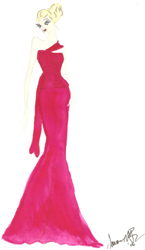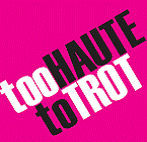~ The Social Diary ~ October 2006, Offering #71 - Introduction by The Social Diary Wine Expert Columnist Gary Parker Zagat Accoladed October 2006, Offering #71 For this month's offering, I wanted to present something that would deviate slightly from our standard format. We have been blessed with the opportunity to try three different Zinfandel's, from the famed producer Seghesio, all from the same vintage. The main difference between these wines is the vineyard they were grown in. I think it would be very educational to try all these wines at the same time, to detect their subtle differences today, and to project those findings into what you believe the future might hold for them. Compare tasting notes of Robert Parker J., The Wine Spectator and Seghesio Winery to your findings. So get a few friends over, roast or grill some nice steaks or Ahi tuna, and have a ball! Seghesio Winery, Since 1895 Those who know Zinfandel best, believe it deserves a place at the table among the greatest wine varieties. Seghesio can count itself among the small handful of esteemed Zinfandel producers in California. Undergoing a huge transformation in the mid 1990's, Seghesio changed from a bulk wine producer to a leading, cutting edge winery that the Wine Spectator counts as one of the five masters of Zinfandel today. Winemaker Ted and CEO Pete Seghesio have focused on their extensive old-vine holdings. Four old-vine Zinfandel offerings, each costing about $40, are the stars of the lineup: The Home Ranch and San Lorenzo in Alexander Valley and the Cortina from Dry Creek are single vineyard wines, whereas the Old Vine label is a blend of lots from those sites. Much of the current success stems from improved farming of the older Zinfandel sites. In 1994, Seghesio hired Phil Freese, the highly regarded vineyard expert who oversaw planting of the Opus One property in Oakville. At first, Freese was hesitant, thinking that a longtime bulk producer couldn’t change. “I said to them that I don’t do what you do. And Pete said "'That’s the point; we don’t want to do what we’ve done,’” Freese recalls. Cortina Vineyard, planted with 25 acres of Zinfandel in 1960, was a case in point. Up through the 1990 vintage, it produced a huge crop (10 tons per acre) that was used for white Zinfandel. But crops that big make poor wine, and by 1997 Freese had reduced yields to 2 tons per acre. By planting a cover crop that offsets the soil and rootstock vigor, and changing pruning methods to obtain smaller, more flavorful grapes, he achieves the desired ripeness. Seghesio Zinfandels are harmonious in style. While the pursuit of maximum ripeness has increased alcohol levels in recent vintages, the wines maintain balance and, more importantly, complexity, concentration and depth of flavor. _____________________________________________________________________________ The Winery Notes: 2004 Zinfandel, Cortina Vineyard, Dry Creek Valley In 1957, our family purchased 56 acres in the heart of Dry Creek Valley. Our fathers had purchased fruit from growers in this valley since the early 1900s and realized its great potential. Here, late afternoon coastal cooling follows long hours of sunshine, allowing the fruit to mature slowly during the summer months. The Site: The Wine: Review by Robert Parker Wine Advocate #165 (Jun 2006) , Rating: 92 Points Review by The Wine Spectator, Rating 88 Points _____________________________________________________________________ The Winery Notes: 2004 Zinfandel, Home Ranch Vineyard, Alexander Valley The Site: The Wine: Review by Robert Parker Wine Advocate #165 (Jun 2006,) Rating: 92 points Review by The Wine Spectator: Rating 90 Points _________________________________________________________________ The Winery Notes: 2004 Zinfandel, Old Vines Today four generations of grape growers later, we are fortunate to still have some of these old vineyards. Half of our family’s 400 acres of vineyards are planted to Zinfandel which includes some of the oldest plantings in the County. While the BATF governs most wine labeling, they have no classification for "Old Vines." Our family benchmark is 60 years and older. Something ethereal happens to Zinfandel with age. Younger vines can be pruned and thinned to mimic old vines, and while they can match old vines’ color and flavor, the distinctive palate weight and natural acidity is elusive to all but the most venerable zinfandel vines. The Sites: The Wine: Review by Robert Parker, Wine Advocate #165 (Jun 2006) , Rating: 90 points
* Gary Parker is the Principal, Founder, Chairman and CEO of The WineSellar Group. From a background of culinary arts, architecture and art, Gary opened The WineSellar & Brasserie in 1988 with a pioneering concept of combining a fine wine shop, a state of the art wine storage facility, and a highly regarded French restaurant named The Brasserie, all under one roof. With its top rated Zagat level cuisine, and Gary Parker's hand picked wine list of 2,500 classic wines, The WineSellar & Brasserie garnered instant notoriety. The wine list has won The Wine Spectator Grand Award (one of the best 100 wine lists in the world) every year since 1988. Gary subsequently created The WineSellar Club and www.winesellar.com, an Internet wine auction site. Gary is recognized as a leading authority in fine wine, and is active as a spokesperson, appraiser, auctioneer and panelist in the industry. (editor's note - Gary is a former principal owner of Laurel Restaurant & Bar. Gary established Laurel in 1995, which he sold in February 2005). back to New this Week.......Gary Parker Archives..........Home ___________Zagat Accoladed....&.... "Culinary Genius!" says The Social Diary's Scott Johnston____________
Warning ** photos, video and writing on this site are the copyright of margomargo.com and Margo Schwab. no reproduction of any part or parts is allowed without written permission by Margo Schwab
|
||
|
|
J. Jenniene Couture
J. Jenniene's Jemima Garcia is "A Star Designer on the Rise" - says Luxe Magazine La Jolla,
"Couture for the style conscious individual" says The Social Diary
858-349-0957 mobile,** Email **
~~~~~~~~~~~~~~~~~~~~~~







